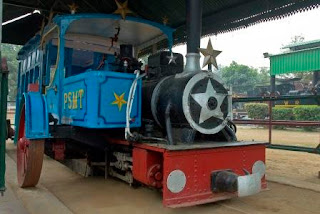The first "Oktoberfest" occurred in Munich, on October 12, 1810. For the public commemoration of their marriage that took place five days before, Crown Prince Ludwig (later King Ludwig I) and Princess Therese of Saxe-Hildburghausen (namesake of the Theresienwiese festival grounds) organized a great horse race. The event was so successful that it was decided to renew it in 1811. An agricultural show was added to boost Bavarian agriculture. The horse race persisted until 1960, the agricultural show still exists and it is held every four years on the southern part of the festival grounds.
In 1816, carnival booths appeared; the main prizes were silver, porcelain, and jewelry.
The founding citizens of Munich assumed responsibility for festival management in 1819, and it was agreed that the Oktoberfest would become an annual event. Later, it was lengthened and the date pushed forward, the reason being that days are longer and warmer at the end of September.
In the year 1910, Oktoberfest celebrated its 100th birthday. 120,000 litres of beer were poured. In 1913, the Bräurosl was founded, which was the largest Oktoberfest beer tent of all time, with room for about 12,000 guests.
From 1939 to 1945, due to World War II, no Oktoberfest took place. Since its beginnings the Oktoberfest has been cancelled 24 times due to war, disease and other emergencies.
There are many problems every year with young people who overestimate their ability to handle large amounts of alcohol. Many forget that beer has 5.8 to 6.3% alcohol, and they pass out due to drunkenness. These drunk patrons are often called "Bierleichen" (German for "beer corpses"). For them as well as for the general medical treatment of visitors the Bavarian branch of German Red Cross operates an aid facility and provides emergency medical care on the festival grounds, staffed with around 100 volunteer medics and doctors per day.
A pipe bomb was set off in a dustbin at the restrooms at the main entrance on September 26, 1980 at 22:19. The bomb consisted of an empty fire extinguisher filled with 1.39 kilograms of TNT and mortar shells. Thirteen people were killed, over 200 were injured, 68 seriously. This was the deadliest terrorist attack in the history of Germany after the Munich Massacre. Governmental authorities propounded a summary of official inquires, purporting that a right-wing extremist Gundolf Köhler from Donaueschingen, a social outcast who was killed in the explosion, was the lone perpetrator. However, this account is disputed strongly by various groups.
Oktoberfest figures (2007)
- Area: 0.42 km2 (103.78 acres)
- Seats in the festival halls: approx. 100,000
- Visitors: 6.2 million
- Beer: appr. 6,940,600 litres (126,900 litres non-alcoholic)
- Wine: 79,624 liters
- Sparkling wine: 32,047 litres
- Coffee and tea: 222,725 litres
- Water and lemonade: 909,765½ litres
- Chicken: 521,872 units
- Pork sausages: 142,253 pairs
- Fish: 38,650 kg
- Pork knuckles: 58,446 units
- Oxen: 104 units
- Expenditure of electricity: 2.8 million kWh (as much as 14% of Munich's daily need or as much as a four person family will need in 560 years)
- Expenditure of gas: about 205,000 m3
- Expenditure of water: about 90,000 m3 (as much as 27% of Munich's daily need)
- Waste: 678 t (2004)
- Toilets: about 980 seats, more than 878 meters of urinals and 17 for disabled persons
- Phone booths: 83, also for international credit cards
- Lost property: about 4000 items, among them 260 pairs of glasses, 200 mobile phones, wedding rings, and even crutches.
Nearly 1,000 tons of garbage result annually from the Oktoberfest. The mountains of garbage created are hauled away and the ways cleanly washed down each morning. The cleaning is paid for in part by the city of Munich and in part by the sponsors.
After 2004 the queues for toilets became so long that the police had to regulate the entrance. To keep traffic moving through the restrooms, men headed for the toilets were directed to the "Pissoir" (giant enclosed grate) if they only needed to urinate. The number of toilets was increased in 2005 by 20%. Now approximately 1,800 toilets and urinals are available.






















































